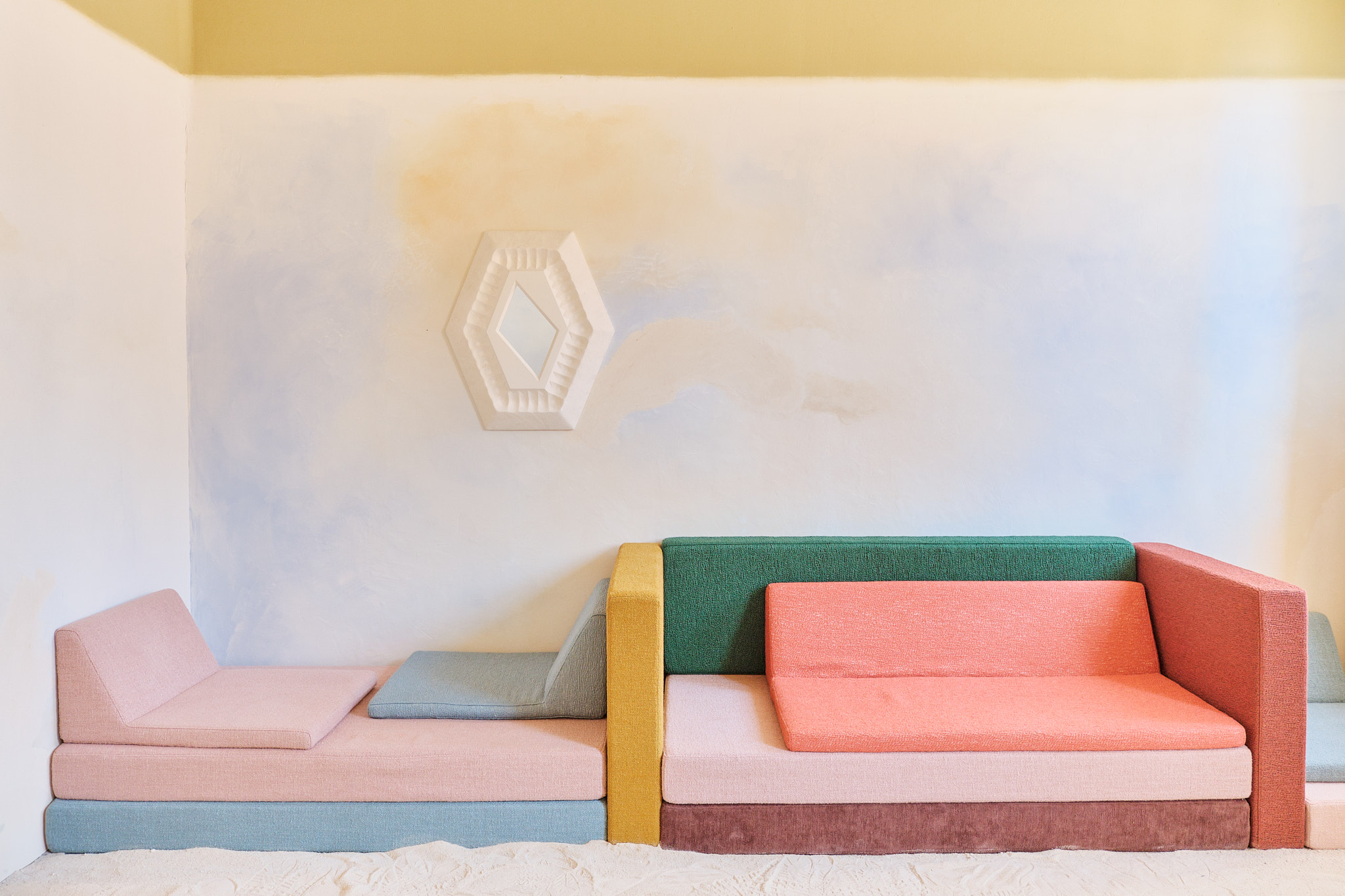
In the south of France, Design Parade 2024 opening weekend unfolded with positive energy, friendship and idea exchange across its two hubs of Hyères and Toulon. The competition between 20 emerging young creatives across the categories of design and interior architecture took centre stage with projects exploring themes of material innovation, escapism, history and sustainability.
Meanwhile, returning previous winners and guests of honour such as Fabien Cappello, Marion Mailaender and Nathalie du Pasquier amongst others presented site specific and immersive installations across the storied rooms of the Modernist Villa Noailles and the 18th century Ancient Évêché.
Design Parade at Hyères' Villa Noailles
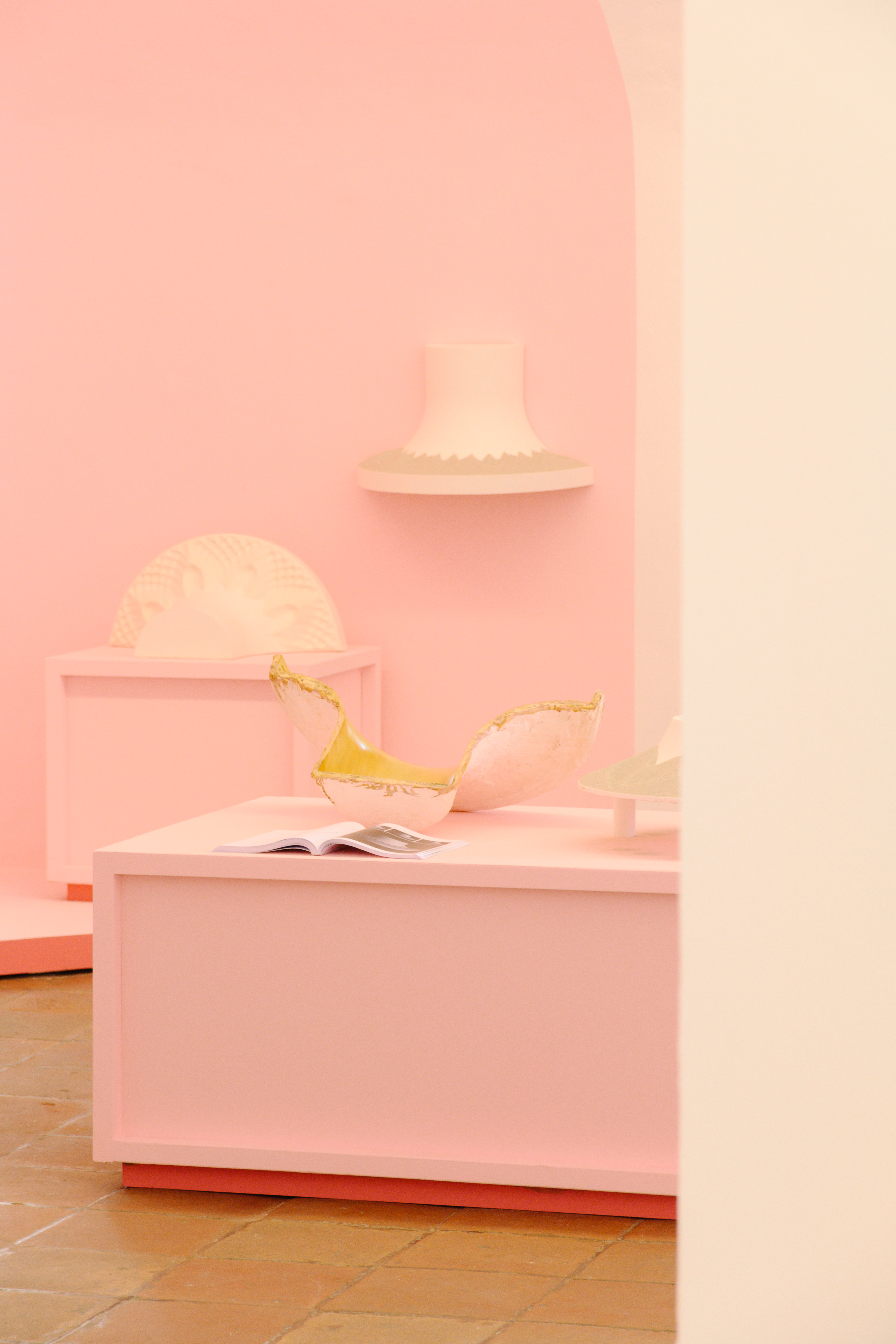
In Hyères, French designers Sacha Parent and Valentine Tiraboschi won the Grand Prix for their moulded sand ornaments that explore how the decorative qualities of nature can become structural, in a search for a sustainable and authentic evolution of design history.
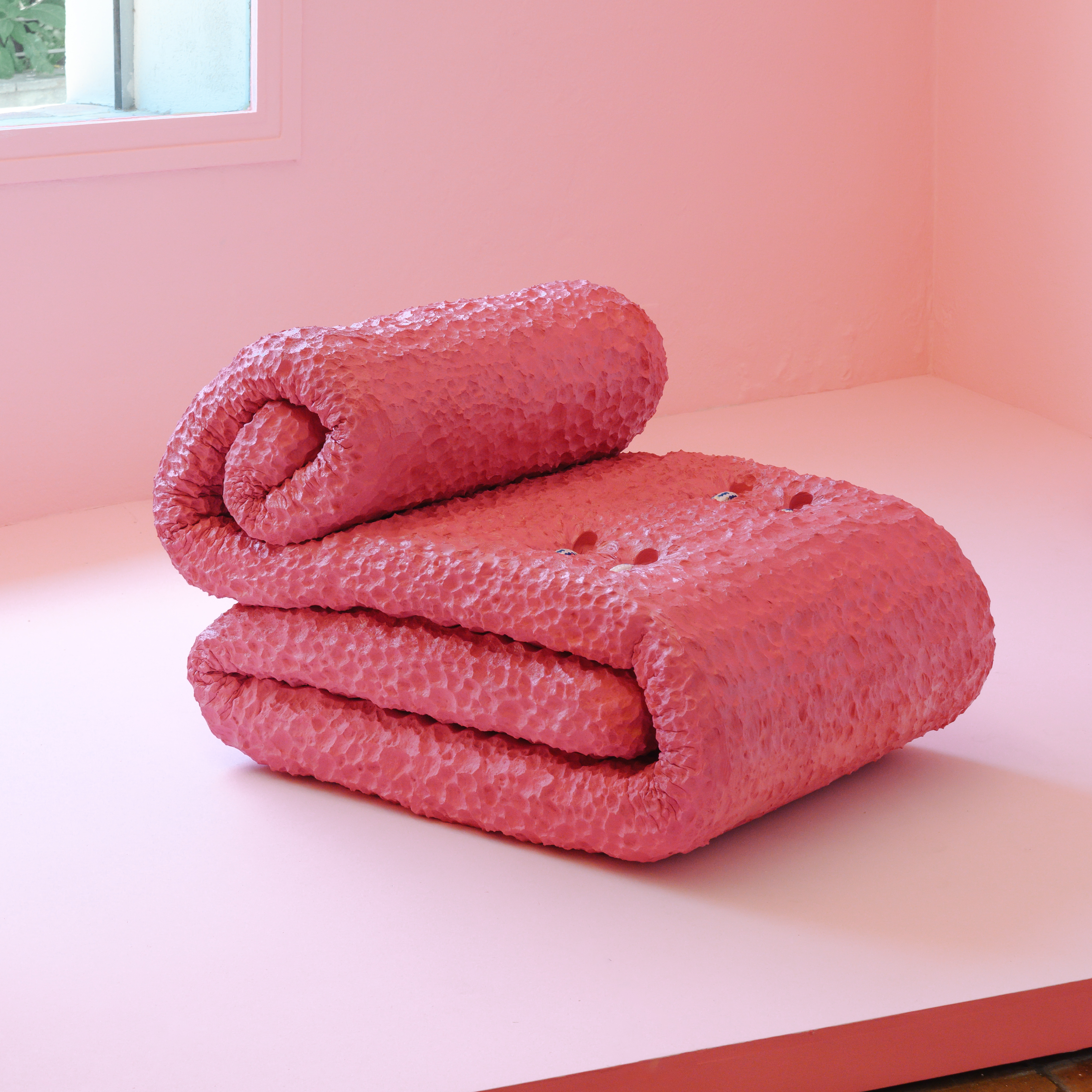
Other original approaches to material innovation amongst the Design nominees include Simon Stanislawski’s colourful seats and sculptures made of used mattresses destined for landfill or burning, and, winner of the public vote, Juliette Rougier’s elegant furniture pieces clad with discarded reeds for woodwind instruments from a Marseille manufacturer made of the bamboo-like native plant Canne de Provence.
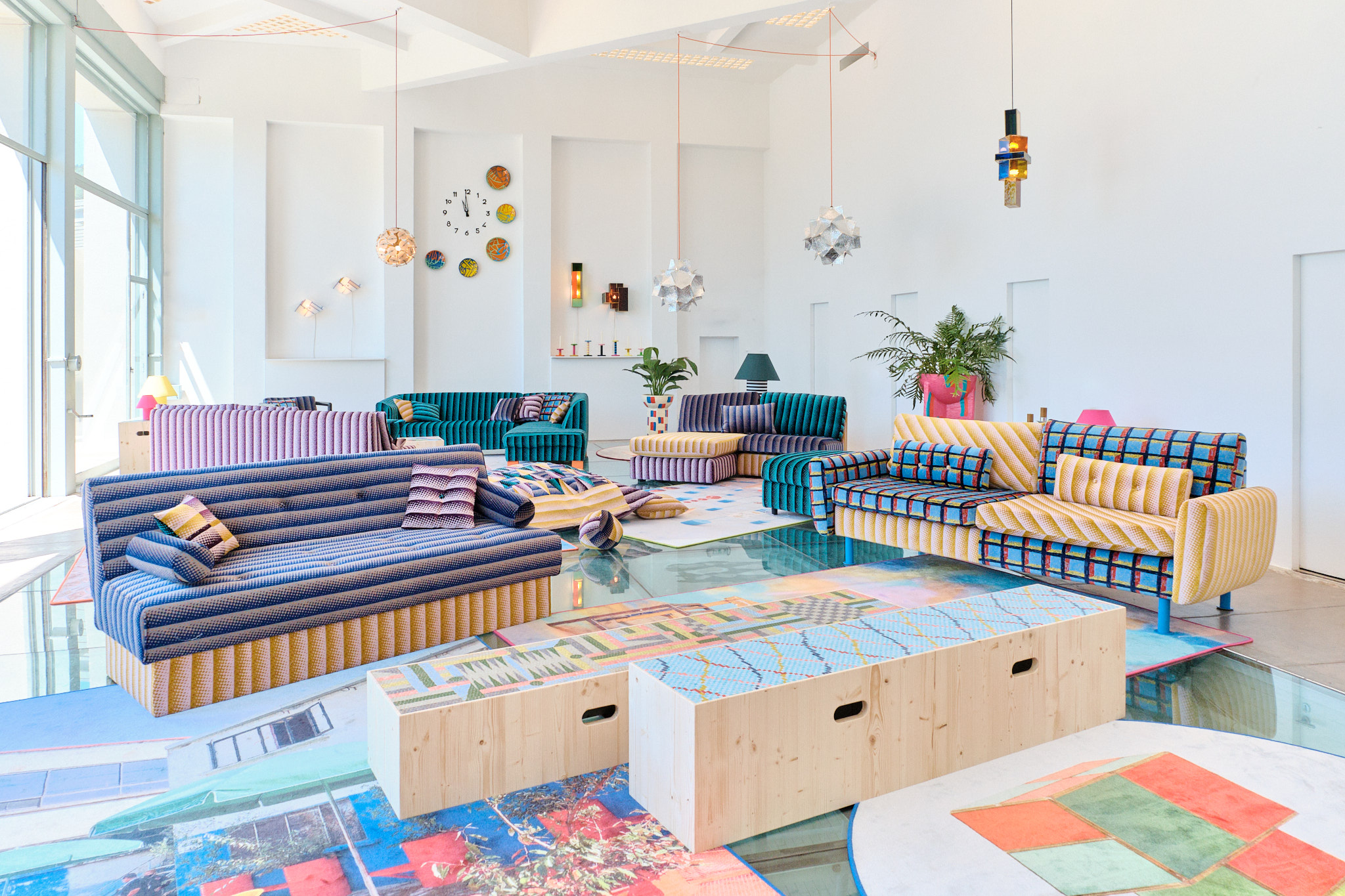
On the rooftop of Villa Noailles, vividly resourceful objects from plant-pot hammock benches, to rolled galvanised steel watering cans, and mosaic top tables formed a larger than life exhibition by Paris-born and Guadalajara-based Fabien Cappello, who participated in the first Design Parade in 2006 and is President of the Jury for Design and guest of honour. His ‘non-aspirational aesthetic’ inspired by vernacular culture relates to a ‘new order of values’ where durability and cultural significance are prioritised.

On the lawn, Materra-Matang, a French studio of architects, woodworkers and researchers led a construction workshop using natural materials sourced from the Porquerolles island in Hyeres, and a pavilion they made with the same ethos overlooks the scene from a balcony above, embodying their intention to connect architecture to the soil.
Design Parade at Toulon's Ancient Évêché
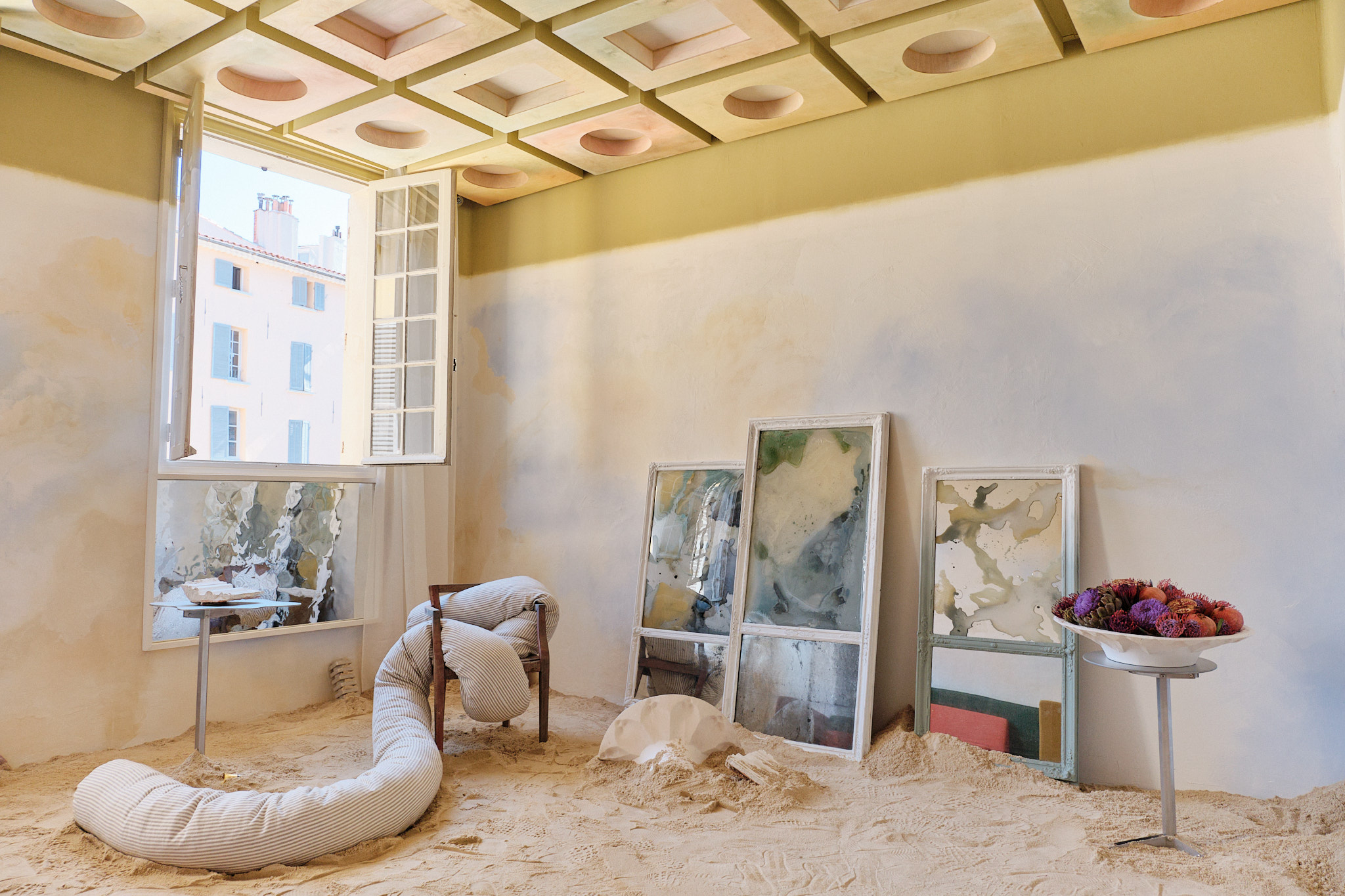
In Toulon at the Ancient Évêché, surrealism, romance and escapism abounded across the Interior Architecture displays, yet often in reaction to a darker truth lurking beneath the surface.

Sébastien Gafari and Sara Guedes created a dream-like abandoned palazzo as a meeting place for displaced people with nowhere to anchor; while Juliette Simeone and Amelie Dandoy’s decadent ‘solar banquet’ melted into an inferno under increasing summer heat.

Winner of the Grand Prix for this category, Willie Morlon built a painted palace out of plasterboard and polystyrene insulation, striking tension between the endurance of precious spaces and the flimsiness of weak materials abundant in contemporary architecture.

Marion Mailaender, president of the jury judging the 10 all-French Interior Architecture nominees, recognised ‘strong attraction to historical references’ layered with ‘a quest for meaning’ across the projects. Rather than decorators, she identifies many of the participants as ‘architect-artists’ who interrogate structure and depth both materiality and philosophically, a term that she herself also identifies with. The Marseille native often playfully combines contemporary design with artefacts, artwork and antique furniture in response to historical and local context, as seen within her installation for the Design Parade Toulon, Résidence Vue Mer.
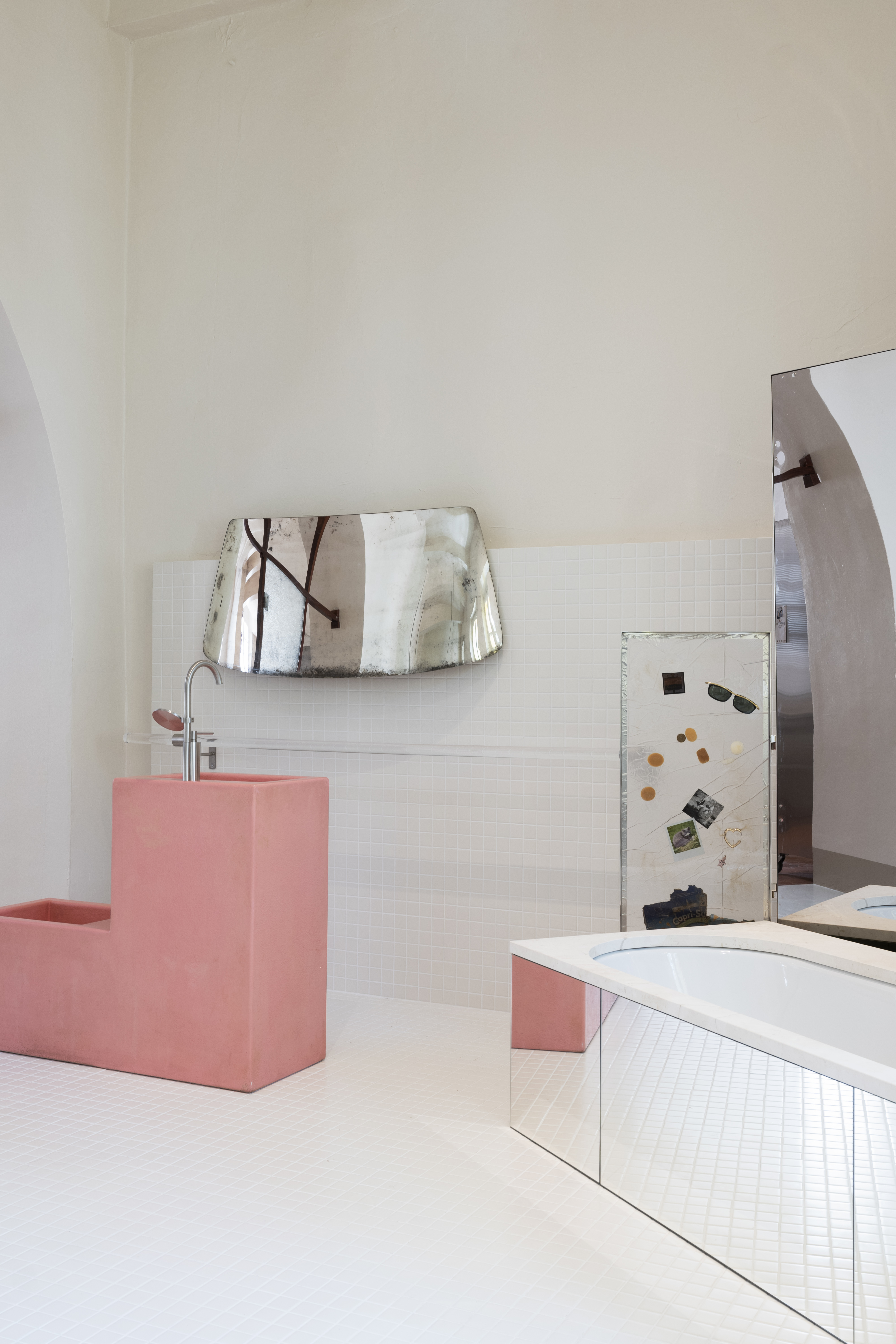
The surrealist domestic scenography of Residence Vue Mer is nostalgic for elegant and enduring Mediterranean coastal residential apartment building interiors of the 70s. Amidst this setting, inspired by Fluxus, she performs a series of illusions of materials and space; from a bathroom made of soap, to a window blind printed with a sea view, and an exit through a wardrobe, all mixed with artworks by Moffat Takadiwa, or an architects’ desk borrowed from French national furniture collection Mobilier National.

This approach of ‘remixing’ connecting history with themes of the present day is the subject of an exhibition in Toulon at Hôtel des Arts running in parallel with the Design Parade (titled ‘Remix’) where unused or damaged furniture pieces from the 17th century onwards that have been ‘alienated’ from the collection of the Mobilier National have been reimagined by contemporary designers such as Rodolphe Parent, Katia Kameli, Wendy Andreu, Martino Gamper and Vincent Beurin into new hybridised objects.

In the spirit of the Surrealist salon that brought together intellectuals and artists to critique the absurdity of contemporary society through humour and debate, community and collaboration are both central to the founding vision and networked structure of Design Parade. Its activity builds its own legacy of intelligent and bold thinkers, who are in turn encouraged and supported by resources and knowledge from prestigious partners such as Chanel, Maison d’art Lesage, Sèvres Manufacture, CIRVA (Centre international de recherche sur le verre et les arts plastiques), Van Cleef & Arpels, le19M, Mobilier national and the Fondation Carmignac.
Over the opening weekend, Jean Pierre Blanc, the festival’s founder and director, conjured an atmosphere of exchange through symposia, awards and social activities such as a generous, bond-building coastal lunch at L’Escale – all summarised in two words by Mailaender, her two favourite parts of Design Parade: ‘Fiesta et Amour’.
Design Parade Hyères is on view until 1 September 2024
Design Parade Toulon is on view until 3 November 2024







